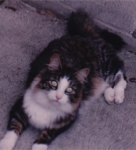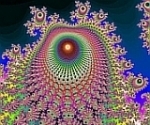I recently had oxygen added to my cpap when I sleep. I feel a lot better. Has anyone else done this?
Oxygen
I had O2 prescribed from before my sleep study.
The pulse oximetry test they ran on me showed I was getting down to 43% saturated O2 while attempting REM sleep, so while I was waiting to be processed, I was on 2 cm of O2.
It helped, but not as much as the CPAP.
Then I was on both until the different doctors and labs could catch up with each other, and I can't say I've noticed any difference now that the O2 is gone.
Of course, my sleep study was done without O2, and showed I had around 90% saturation without O2, so that was that.
If you need it, it makes a difference, if you don't, it doesn't. IMHO.
Barbara
The pulse oximetry test they ran on me showed I was getting down to 43% saturated O2 while attempting REM sleep, so while I was waiting to be processed, I was on 2 cm of O2.
It helped, but not as much as the CPAP.
Then I was on both until the different doctors and labs could catch up with each other, and I can't say I've noticed any difference now that the O2 is gone.
Of course, my sleep study was done without O2, and showed I had around 90% saturation without O2, so that was that.
If you need it, it makes a difference, if you don't, it doesn't. IMHO.
Barbara
_________________
| Mask: FlexiFit HC431 Full Face CPAP Mask with Headgear |
| Additional Comments: 15cm H2O |
International Order of Royal Hose Heads, Initiate
I think it is fair comment to say that supplemental oxygen is only required when prescribed.
However, if someone is monitoring their own SpO2 and can produce charts showing regular dropping below say 88%, then take the data to your doctor and discuss what can be done.
But, on the other hand, I an intrigued that in the US there are walk-in (or so I am told) oxygen bars often in Ski resorts, where people can wander in & buy a few minutes of oxygen 'rejuvenation' - this does seem frivolous but I am sure they would not be there if there wasn't either a demand or some demonstrable value.
Now, the difference between a walk in oxygen bar & supplemental oxygen is that one is a short burst & the other continues for hours.
In a discussion on supplemental oxygen some months back, someone commented that too much oxygen can be bad - this was in relation to someone having say 100% SpO2. In this past thread the comment was that 100% is too high & that 99% is as high as most of us need to get.
I am sure that some people living in high altitude locations, might benefit from added oxygen.
DSM
However, if someone is monitoring their own SpO2 and can produce charts showing regular dropping below say 88%, then take the data to your doctor and discuss what can be done.
But, on the other hand, I an intrigued that in the US there are walk-in (or so I am told) oxygen bars often in Ski resorts, where people can wander in & buy a few minutes of oxygen 'rejuvenation' - this does seem frivolous but I am sure they would not be there if there wasn't either a demand or some demonstrable value.
Now, the difference between a walk in oxygen bar & supplemental oxygen is that one is a short burst & the other continues for hours.
In a discussion on supplemental oxygen some months back, someone commented that too much oxygen can be bad - this was in relation to someone having say 100% SpO2. In this past thread the comment was that 100% is too high & that 99% is as high as most of us need to get.
I am sure that some people living in high altitude locations, might benefit from added oxygen.
DSM
xPAP and Quattro std mask (plus a pad-a-cheek anti-leak strap)
Oxygen
My Encore software showed periods of shallow breathing. The DME got the Dr. to go for a overnight at home study. During these periods of shallow breathing my levels of oxygen were getting too low. Second test confirmed and I was given a prescription for a oxygen machine ( sounds like a lawn mower in the room). It made me feel much better. My Dr. told me a lot of people with apnea have this and don't know it. I bought my own Auto machine and software and have helped myself with my Dr. approval. I encourage everyone to get the software it's only $99.00 plus a card reader. By the way on my cpap furnished by insurance was set at 15 lbs. My auto is set 8 to 16. 86% of the time the pressure runs 9lbs never been over 12ls. My DME told me (I have worried the crap out of them for answers) that since I showed up with all these questions, that in most cases if the pressure from the sleep study was over 12lbs. there is a good chance it wasn't a good test. I can verfy that at home over the course of a week with the auto machine you will get a truer test. I hope this is a help to someone.
Re: Oxygen
Nitegeek,NiteGeek wrote:<snip>
By the way on my cpap furnished by insurance was set at 15 lbs. My auto is set 8 to 16. 86% of the time the pressure runs 9lbs never been over 12ls. My DME told me (I have worried the crap out of them for answers) that since I showed up with all these questions, that in most cases if the pressure from the sleep study was over 12lbs. there is a good chance it wasn't a good test.
<snip>
The pressure settings are actually measured as cms (centimeters) e.g. 15 cms is the pressure needed to force water up a tube by 15 centimeters (picture a big U tube & the air is pumped in one side of the U & it pushes the water around the U such that the highest level is 15 cms above the lowest level)
BUT there are times when it feels like 15 lbs
Cheers
DSM
xPAP and Quattro std mask (plus a pad-a-cheek anti-leak strap)









